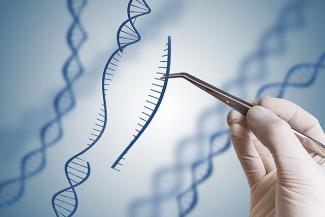
Dr Niranjan Rathod, Associate Director and HOD, Haemato – Oncology and Bone Marrow Transplant, Nanavati Hospital, maintains that gene therapy could herald a revolutionary shift in treatment of thalassemia, but research is still at a nascent stage.
What is gene therapy, with reference to thalassemia?
Gene therapy for thalassemia involves genetic manipulation of the defective gene responsible for thalassemia, in patient derived stem cells with the help of a virus vector to correct the defect followed by an Autologus Stem Cell transplant with these manipulated stem cells.
What is the difference between gene therapy and bone marrow transplant?
Gene therapy relies on the genetic manipulation of patient’s own cells to correct the genetic defect and later transplanting them back in the patient.
The current practice of Bone Marrow Transplant, also better known as Hematopoietic Stem Cell Transplant, implies transplanting a healthy hematopoietic system from a Human Leucocyte Antigen (HLA) matched donor into the patient, thus replacing the defective cells of thalassemia with healthy ones.
Can gene therapy be viewed as single most promising cure for thalassemia in future?
Gene therapy seems to be a very promising modality of treatment. However, it is still in its nascent phase and the effectiveness and practical implementation in day to day practice needs to be worked upon. Once made available to the common people, it surely seems to be worthy enough to be the single most promising cure for thalassemia.
What are limitations of gene therapy for cure of thalassemia?
As gene therapy is still in its research phase, the hurdles that it might impose after application of the technique in day to day practice cannot be predicted as of today. Also the possible long term and short term side effects need to be studied before implementing it as a treatment modality available to all.
Also, being a very complex procedure which requires specialized equipment, cost effectiveness remains a big question.
Where does India stand as far as gene therapy for cure of thalassemia?
India is doing its bit by participating in a few trials and research through a few selective centers all over the country. Presently, our contribution is of importance in terms of data generated out of these centers that is being inspected cumulatively at a larger level.
India reports a high incidence of thalassemia. Around 10,000 thalassemia major cases are born every year. What are the three priority areas the government and society need to work on to reduce number of new thalassemia cases in India?
“Prevention is better than cure” is most apt for Thalassemia as the burden of the disease not just affects individual families but the society at large.
- Prime importance needs to be given to Awareness of the disease and more so of the carrier state of Thalassemia.
- Universal screening programme should be implemented, especially in the high risk zones along with neonatal screening at all hospitals
- Marriage counselling, family planning and pre-pregnancy counselling and necessary tests or intervention needs to be emphasized upon, especially in carrier adults.







